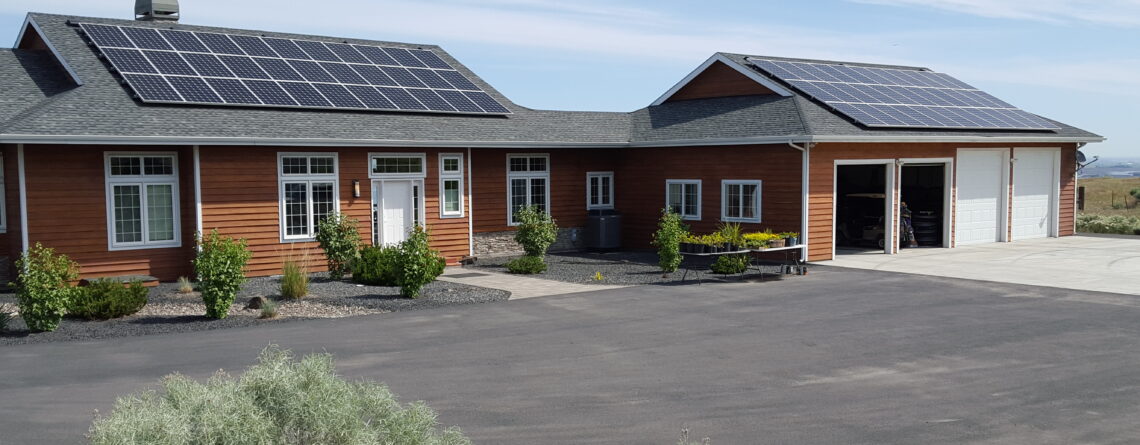How to Size a Grid Tie Solar System Part 1
Correct sizing of a grid tie solar system is key to answering the most common question we receive: How much does a grid tie solar system cost? It also plays an important role in ensuring you receive the greatest benefit from your investment. Here’s why:
- Size your solar system too small, and it might not cover enough of your bill to make a reasonable difference, and you could have a lengthy return on investment.
- Size the system too big, and your upfront cost will be higher than necessary, and you may give free power away to your utility.
The best way to determine the correct solar system size for your home or business is to contact a qualified solar design team, like ours here at Fire Mountain Solar. But if you are the type of person that wants to do it yourself, or if you simply want to understand the process, in this post we show you how to get a general idea of how much grid tie solar you need.
Simple Grid Tie Solar System Sizing
If you’re just looking for a general idea of how much solar you would need to offset 100% of your electric bill, you only need two bits of information:
- Your average daily electrical use, in kilowatt hours (kWh)
- The average sun hours in your area.
Calculating Your Average Daily Power Use in Kilowatt Hours
To factor in seasonal variations in how you use power and how much power is produced by your solar array, the annual average daily kilowatt hours of power your home consumed is used. Some utility companies will list the most recent 12 month average on your utility bill statement as “Average Daily kWh”. But it is critical to confirm its the annual not monthly average, which some utilities list instead. If needed, you can add up the total kilowatt hours used from your last year of bills, then calculate the annual average manually by dividing by 365.
Finding the Average Peak Sun Hours in Your Area
To estimate how much power a solar panel will produce, you need to know how much sunlight you can expect will hit it in a year. Because each location on Earth receives a different intensity of sunlight and hours of daylight, which both vary seasonally, we rely on solar insolation data from the U.S. National Renewable Energy Laboratory, or NREL. You can use the following solar insolation map to find the average peak sun hours in your area, or you can use our simple to read solar insolation chart. Keep in mind that daily weather patterns also affect a location’s average peak sun hours, as do more hyperlocal factors like shading, roof angle (pitch) and the direction your roof faces (azimuth).

Source: National Renewable Energy Laboratory
For more in depth information about solar radiation around the world, visit the National Renewable Energy Laboratory’s NSRDB (National Solar Radiation Database)
Calculating How Much Solar You Need
The basic calculation is simple: Average daily kilowatt hours (kWh) of consumption divided by the average daily peak sun hours = DC kilowatts (kW) of solar you need.
Example: 25 kWh/3.5 sun hours = 7.14 kW of solar
Remember, this is just a general idea of how much solar you will need. This number could be useful if you are only looking for a ballpark cost of a solar system for your home, or if you’re trying to determine approximately how much space you may need for a solar array that covers 100% of your electrical consumption.
More Precise Grid Tie Solar System Sizing
To size a grid tie solar system more precisely, you will need more information.
- The angle your solar panels will be installed at. For roof mount systems this is typically determined by your roof pitch.
- What direction the solar panels will be facing in relation to the sun. This is known as the azimuth.
- A realistic derating factor. No solar system is 100% efficient. The equipment uses a small amount of electricity while it’s operating, and a minor amount of power is lost as electricity travels through wire. These inefficiencies need to be included in estimates of solar system production. This is called derating. A common derating factor for residential and commercial solar is 0.8.
Now you’re ready to calculate the size of your grid tie solar system, which may sound complicated. And it can be. Fortunately, our friends at NREL provide some help in the form of their PVWatts Calculator, which we cover in How to Size a Grid Tie Solar System Part 2.
For more than 20 years Fire Mountain Solar has been helping do it yourselfers and full service clients achieve their solar goals. If you are wondering if investing in solar is right for you, contact us for a free proposal.

